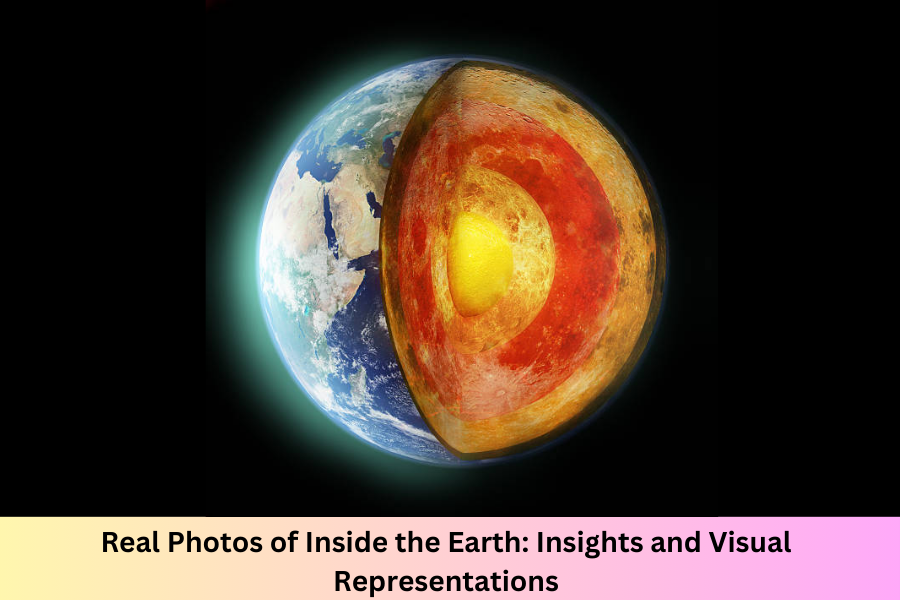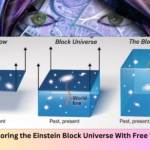Introduction
Real Photos of Inside the Earth, a dynamic and layered sphere, holds mysteries far beneath its surface. While breathtaking images of the Earth from space or its surface landscapes are accessible, photographs from within the planet remain unattainable. Scientists and explorers rely on innovative methods to visualize Earth’s interior, combining technology, data, and artistic imagination. Let’s delve into how the Earth’s inner workings are studied and visualized.
The Crust: Our Familiar Frontier
The crust, Earth’s outermost layer, is the thin, solid shell we inhabit. It constitutes less than 1% of Earth’s total volume and is divided into oceanic and continental types. Oceanic crust, mostly basalt, is denser and thinner, ranging from 5 to 10 kilometers (3 to 6 miles) in thickness. Continental crust, primarily granite, can extend up to 50 kilometers (31 miles) thick.
While photographs of surface activities such as earthquakes, volcanic eruptions, and tectonic shifts are abundant, direct images of the crust’s interior remain absent. Instead, cross-sectional diagrams illustrate features like fault lines, magma chambers, and subduction zones. Volcanic eruptions provide indirect “samples” of the crust, revealing the processes occurring beneath the surface
Wiki
| Layer | Description | Key Features | Methods of Study |
| Crust | The Earth’s outermost solid layer, relatively thin compared to the layers beneath it. | 5–50 km thick, made of granite (continental) and basalt (oceanic) | Seismic wave analysis, volcanic eruptions, drilling (e.g., Kola Superdeep Borehole) |
| Mantle (Upper) | The semi-molten upper portion of the mantle, responsible for tectonic movements. | 660–2,900 km depth, high viscosity, convective heat transfer | Seismic tomography, volcanic activity, laboratory experiments simulating high pressures and temperatures |
| Mantle (Lower) | A dense and rigid portion of the mantle, subject to immense pressure and heat. | Bridgmanite is the most common mineral; convection currents exist | Seismic waves, experimental studies of mineral behavior under extreme conditions |
| Core (Outer) | The liquid layer of the core, generating the Earth’s magnetic field. | Iron and nickel, creates Earth’s magnetic field | Seismic waves (P-waves), geomagnetic field studies |
| Core (Inner) | The solid core at the Earth’s center, despite extreme temperature. | Solid iron and nickel, extremely dense | Seismic waves, computer modeling, magnetic field analysis |
| Transition Zone | The region between the upper and lower mantle, marked by a change in mineral structure. | Wadsleyite and ringwoodite minerals formed under high pressure | Seismic studies, high-pressure laboratory experiments |
| Seismic Waves | Waves that provide critical data about Earth’s interior through their speed and behavior in different materials. | P-waves and S-waves used to model Earth’s layers and their boundaries | Seismic tomography, data from natural and artificial earthquakes |
| Drilling Projects | Physical drilling into the Earth’s crust to sample materials. | Kola Superdeep Borehole: deepest drill at 12 km (7.5 miles) | Direct geological sampling, temperature and pressure measurements |
| Volcanic Materials | Magma from volcanic eruptions provides materials from deep within the mantle. | Magma, gas, and minerals brought to the surface | Study of volcanic rocks and diamonds, chemical analysis, isotope dating |
| Computer Models | Simulations and models based on seismic and laboratory data to visualize Earth’s interior. | 3D and 2D models of Earth’s structure and behavior | Computational simulations, seismic wave data analysis |
The Mantle: Earth’s Dynamic Middle
Beneath the crust lies the mantle, Earth’s largest layer, occupying 84% of the planet’s volume. Extending to a depth of about 2,900 kilometers (1,800 miles), the mantle consists of solid rock that behaves like a viscous fluid over long timescales. Minerals such as olivine and pyroxene dominate its composition, with bridgmanite being the most abundant.
The mantle’s upper portion, known as the asthenosphere, is semi-molten and facilitates the movement of tectonic plates. Hotspots, where mantle plumes rise to the surface, create volcanic islands like Hawaii. Lava from these hotspots originates deep within the mantle, offering glimpses of its makeup. Despite the lack of photographs, researchers use seismic wave data to model its structure, revealing variations in density, temperature, and composition
The Transition Zone
Between the upper and lower mantle lies a transition zone marked by significant changes in mineral structures. High pressures transform common minerals into denser forms, such as wadsleyite and ringwoodite. This zone plays a crucial role in the movement of water and other elements within the Earth. Studies suggest that some parts of the transition zone may contain water stored within minerals, equivalent to the volume of Earth’s oceans. However, visualizing this region relies on indirect techniques like seismic tomography and high-pressure experiments
The Lower Mantle
The lower mantle, extending from 660 to 2,900 kilometers (410 to 1,800 miles) beneath the surface, is a region of immense pressure and temperature. Seismic studies reveal that this layer is relatively uniform but undergoes slow convective movements, transferring heat from the core to the surface. These movements drive geological processes such as plate tectonics and volcanic activity.
Bridgmanite, the primary mineral in the lower mantle, was discovered through high-pressure experiments and samples from meteorites. Its discovery provides crucial insights into the behavior of materials under extreme conditions, helping scientists model the mantle’s dynamics and heat flow
The Core: Earth’s Fiery Heart
At the planet’s center lies the core, divided into the outer and inner layers. The outer core, a molten sea of iron and nickel, surrounds the solid inner core. This layer, ranging from 2,900 to 5,100 kilometers (1,800 to 3,200 miles) in depth, generates Earth’s magnetic field through the motion of its liquid metals. Scientists study this field to infer the outer core’s dynamics.
The inner core, primarily composed of solid iron, is about 1,220 kilometers (760 miles) in radius. Despite temperatures reaching 5,200°C (9,400°F), equivalent to the sun’s surface, the immense pressure keeps it solid. Recent studies suggest the presence of an “innermost core,” a dense metallic sphere within the inner core, hinting at complex layering within this fiery heart
Seismic Waves: Probing Earth’s Interior
Seismic waves, generated by earthquakes or artificial explosions, serve as the primary tool for studying Earth’s interior. These waves travel at varying speeds depending on the density and composition of the material they pass through. By analyzing seismic wave patterns, scientists create detailed maps of Earth’s internal structure.
For example, P-waves (primary waves) travel through solids and liquids, while S-waves (secondary waves) cannot pass through liquids, providing evidence of the molten outer core. Variations in wave speeds also reveal the boundaries between layers, such as the Mohorovičić discontinuity (crust-mantle boundary) and the core-mantle boundary
Computer Models and Artistic Interpretations
Since direct imaging is impossible, researchers rely on computer-generated models and artistic representations to visualize Earth’s interior. These models integrate seismic data, mineral physics, and thermodynamic calculations to depict the planet’s layers. Cross-sectional diagrams and 3D simulations help scientists and the public understand the complex processes occurring deep within the Earth
Artistic interpretations, often created in collaboration with scientists, bridge the gap between abstract data and human understanding. These visuals play a crucial role in education and outreach, making Earth’s inner workings accessible to broader audiences.
The Limits of Exploration
Despite advancements in technology, exploring Earth’s depths remains a formidable challenge. The deepest humans have drilled is the Kola Superdeep Borehole in Russia, which reached 12 kilometers (7.5 miles) into the crust—far short of the mantle. Extreme temperatures and pressures make deeper drilling currently unfeasible. Future technologies may one day enable direct sampling of the mantle or even the core, providing unprecedented insights into Earth’s interior.
Volcanic Windows into the Deep
Volcanic eruptions offer rare opportunities to study materials from the mantle. Magma originating deep within the Earth carries minerals and gases to the surface, revealing clues about the mantle’s composition and temperature. For instance, diamonds, formed under high-pressure conditions in the mantle, provide evidence of processes occurring hundreds of kilometers below the surface.
Scientists analyze these materials using techniques such as X-ray diffraction and electron microscopy, uncovering the secrets of Earth’s hidden layers. Volcanic rocks also contain isotopes that help date geological processes and track the movement of mantle plumes
Earth’s Magnetic Field: A Core Connection
The outer core’s molten iron generates Earth’s magnetic field, a protective shield against solar radiation. This field undergoes periodic reversals, where the magnetic north and south poles switch places. Studying these reversals, recorded in rocks and sediments, provides insights into the outer core’s dynamics and the planet’s geological history.
Geomagnetic observations, combined with computer simulations, reveal the complex interplay between the outer core and mantle. Understanding these interactions is crucial for predicting magnetic field changes and their impact on life and technology
Implications for Planetary Science
Studying Earth’s interior extends beyond our planet. Comparative analyses of Earth, Mars, and other celestial bodies help scientists understand planetary formation, differentiation, and evolution. For example, seismic data from NASA’s InSight mission on Mars reveal similarities and differences in the internal structures of Earth and the Red Planet. These findings inform theories about the origins of terrestrial planets and their potential for supporting life.
By exploring Earth’s interior, scientists gain a deeper appreciation of its dynamic nature and its role in shaping the surface environment we call home. The journey to understand our planet’s depths continues, driven by curiosity and the promise of discovery
Conclusion
While we may not have Real Photos of Inside the Earth interior due to the extreme conditions that make direct exploration impossible, our understanding of the planet’s hidden layers has grown significantly. Through seismic waves, volcanic eruptions, and computer-generated simulations, scientists have pieced together detailed models of the Earth’s structure. These representations—though not actual photographs—offer a profound glimpse into the processes and materials that lie deep beneath our feet.
The Earth’s crust, mantle, and core each play a crucial role in shaping the surface environment, from tectonic activity to the planet’s magnetic field. While technologies like drilling and seismic tomography have brought us closer to understanding the internal workings of the planet, true visual representation remains a challenge. Nonetheless, the methods we use to study Earth’s interior continue to evolve, and future advancements may one day enable us to directly observe the depths that have long been out of reach. For now, we rely on a combination of science, art, and imagination to bring the mysteries of Earth’s inner layers to light.
Frequently Asked Questions (FAQs)
1. Why can’t we take Real Photos of Inside the Earth interior?
Taking Real Photos of Inside the Earth interior is impossible because the conditions are too extreme. The Earth’s layers, from the crust to the core, are subjected to immense pressure and high temperatures, making it impossible to directly reach or capture images from such depths. Instead, scientists rely on seismic waves, computer models, and volcanic materials to study and infer the structure beneath the surface.
2. What methods do scientists use to understand the Earth’s interior?
Scientists primarily use seismic wave analysis, where the speed and behavior of seismic waves provide clues about the Earth’s internal structure. Drilling projects, like the Kola Superdeep Borehole, and volcanic eruptions that bring magma from the mantle to the surface also offer indirect insights into the composition and processes happening below. Additionally, computer simulations based on seismic data help create detailed models of the Earth’s layers.
3. Are there any photos of volcanic material from deep within the Earth?
Yes, volcanic eruptions provide rare glimpses of material that originates deep within the Earth. When magma rises to the surface, it carries minerals and gases from the mantle, allowing scientists to study its composition. Diamonds, for instance, are formed under high-pressure conditions in the mantle and can be brought to the surface during volcanic eruptions.
4. What is the closest we have come to directly observing the Earth’s interior?
The Kola Superdeep Borehole in Russia is the deepest hole ever drilled by humans, reaching 12 kilometers (7.5 miles) into the Earth’s crust. While this is far from reaching the mantle, it remains a remarkable achievement in direct exploration of the Earth’s interior. However, extreme temperatures and pressures prevent us from drilling any deeper.
5. How do seismic waves help scientists understand the Earth’s core?
Seismic waves travel through the Earth and behave differently depending on the material they pass through. P-waves (primary waves) can move through both solids and liquids, while S-waves (secondary waves) cannot pass through liquids. The absence of S-waves traveling through the outer core provided key evidence that this layer is liquid. By studying the speed and path of seismic waves, scientists can map the boundaries between different layers of the Earth.
6. Can future technologies allow us to see inside the Earth?
While current technology has its limitations, advancements in drilling techniques, seismic imaging, and computational power could one day enable more direct observation of Earth’s deeper layers. Scientists are optimistic that future technologies, such as high-temperature and high-pressure instruments, could help us access the mantle or core and gather more direct data from Earth’s interior.
Explore the latest news and updates on Play Hop



